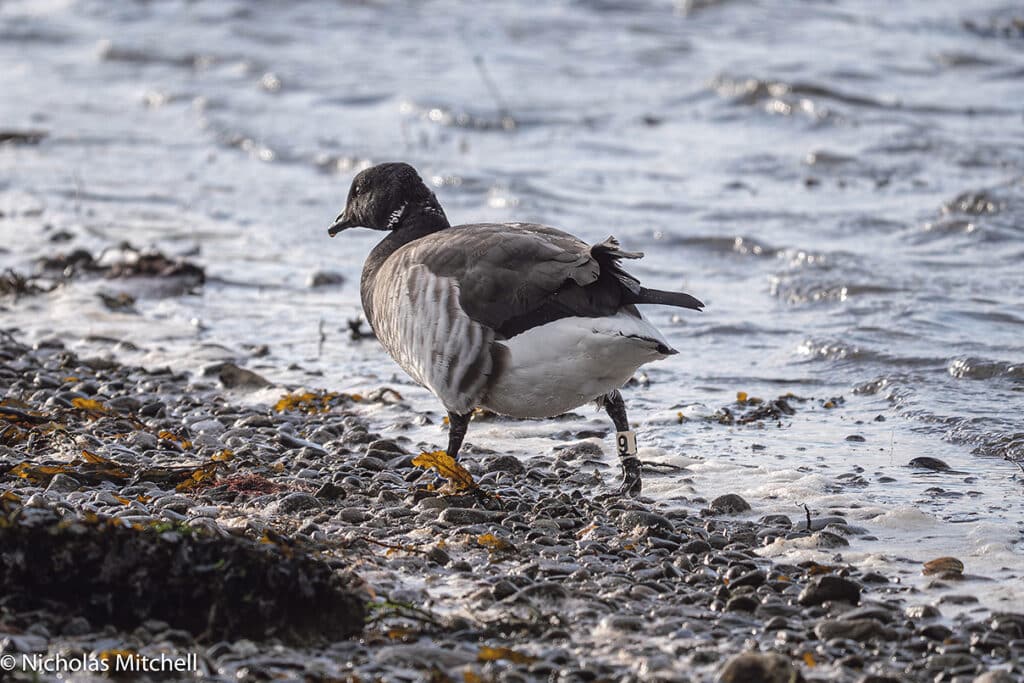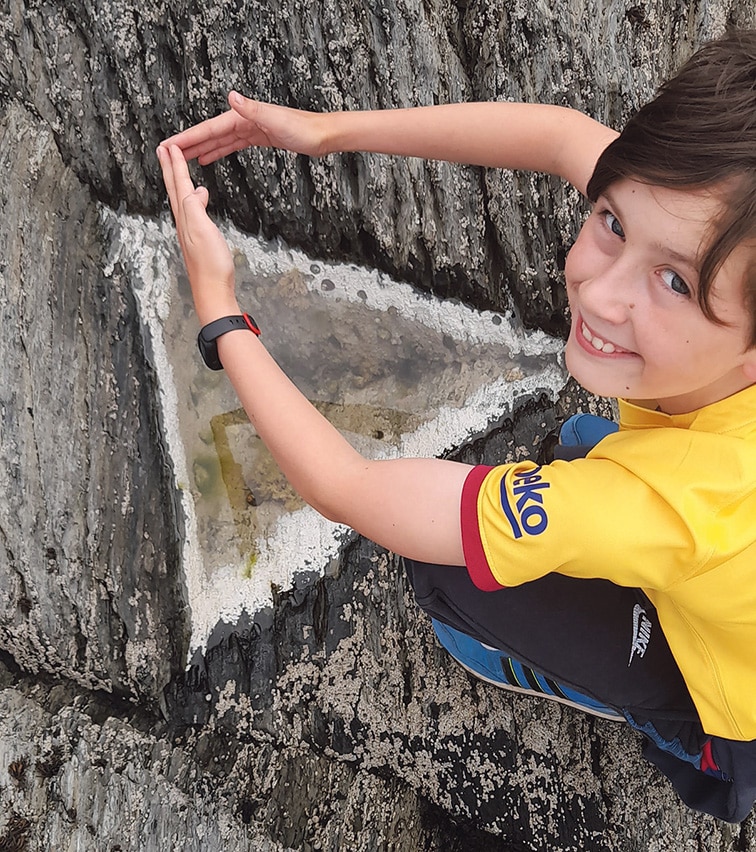This month, committee member and National Parks and Wildlife Ranger, Dave Rees writes about one of our winter visitors, the Brent Goose.

One of the true sounds of the winter for me is the sound of a flock of Brent Geese quietly grazing on the edge of one of our estuaries. Their gentle ‘prut, prut’ seems to me like a sound of contentment. In recent years they have become a more frequent sight in West Cork, as their distribution seems to be expanding south and west. Small wintering flocks have become established at Courtmacsherry and Timoleague. They will be a more familiar sight to people that live a little further east and are well known around Cork Harbour. This is nothing though compared to the numbers of Brent Geese that are found in Dublin, which can lay claim to being the Brent Goose capital of the world. Dublin Bay holds more than 7,000 Brent Geese each winter, but it is the sight of many of these birds flying in from the bay to feed and roost on the many playing fields in the city that can captivate Dubliners.
Three separate sub-species of Brent Goose are known to occur. In Ireland we mainly see the pale-bellied Brent Goose. These breed mainly in Arctic Canada, northern Greenland and Spitzbergen. They travel to Ireland, northern Scotland and Denmark for the winter. Further east, the dark-bellied version is far more common. These birds breed in Arctic Russia and winter in Britain and western Europe. The third sub-specie, the Black Brant, can be found along the western coast of USA. Although the pale-bellied sub-species is the one we commonly see, a few individuals of the two other sub-species are usually found in Ireland each winter.
The Irish wintering population has seen an increase in numbers over the years with over 40,000 birds over-wintering here. That said, in recent years there has been a slight decline, but numbers may fluctuate depending on how successful a breeding season the birds have had, and whether the number of juvenile birds increases the winter population. The birds usually arrive in Ireland during October. They will gather at Strangford Lough when they first arrive, before dispersing to other sites around the country. Big numbers can be found at Strangford Lough, Lough Foyle, Dublin Bay, the Wexford Slobs and Castlemaine Harbour. The birds tend to stay in family groups, with the juveniles identifiable by the white edges around the feathers on their backs and the lack of a thin white neck collar that the adults have. The family group generally stays together throughout the winter while they find favoured feeding areas. The birds can sometimes become aggressive towards others if they come too close to their feeding area.
There are a number of current projects studying Brent Geese and how they use sites around the Irish coast. This has led to some birds being caught and fitted with colour rings on their legs. The colour rings are a unique combination that can identify individual birds. The Irish Brent Goose Research Group has a website (www.irishbrentgoose.com) where you can find out more about the projects as well as reporting any sightings of colour ringed birds that you come across.
So, when you’re out for a walk over the winter around any of our estuaries, keep an eye (and ear) out for Brent Geese, and you may also be able to contribute to our knowledge of the birds if you spot some colour rings.
Branch News
Upcoming events being held by the Branch are:
Sunday, November 12 Rosscarbery
Wednesday, November 22 Talk ‘Fair Seas’ by Rosalind Skillen of BirdWatch Ireland
Visit our website www.birdwatchirelandwestcork.ie for more information about these events. To receive news and reminders about our events join our mailing list by sending an email to mailinglist@birdwatchirelandwestcork.ie.
For more information about the Branch, contact Fiona O’Neill at secretary@birdwatchirelandwestcork.ie.
FB @BirdWatchIrelandWestCork
Twitter @BWIWestCork


